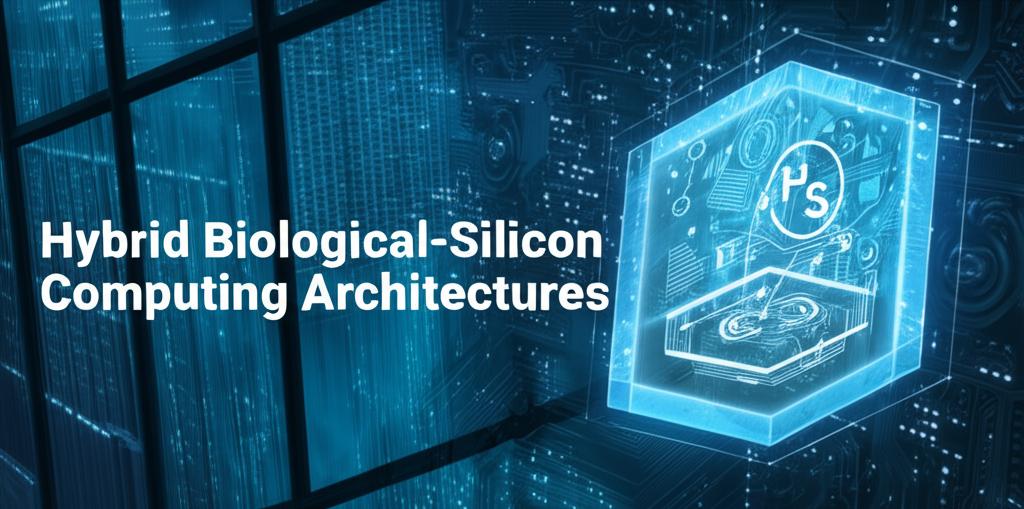Hybrid biological-silicon computing represents a cutting-edge interdisciplinary field that merges living biological materials, such as neurons or brain organoids, with traditional silicon-based electronic hardware. This approach aims to harness the unique computational capabilities inherent in biological systems, like adaptation, low power consumption, and complex pattern recognition, while leveraging the speed and established infrastructure of silicon technology.
The drive towards these hybrid architectures stems from several factors. Conventional silicon computing faces challenges related to the physical limits of transistor miniaturization (Moore's Law) and the immense energy consumption required for large-scale computations, particularly in artificial intelligence. Biological systems, especially the brain, perform complex tasks with remarkable energy efficiency – the human brain operates on approximately 20 watts. By integrating biological components, researchers hope to create computing systems that are significantly more powerful and energy-efficient for specific tasks.
Typically, these hybrid systems involve culturing biological elements, such as neurons derived from stem cells, directly onto silicon chips equipped with microelectrode arrays. These electrodes serve as the crucial interface, allowing for bidirectional communication: they can stimulate the biological cells with electrical signals and record the resulting neural activity. Maintaining the viability of the biological component is critical, requiring controlled environments that provide nutrients, manage temperature, and ensure sterility.
Recent advancements have demonstrated the potential of this technology. Researchers have successfully created systems where lab-grown brain organoids (small, self-organized 3D structures resembling aspects of the brain) are integrated with silicon chips. For instance:
- Brain Organoid Computing: Startups like FinalSpark offer access to platforms where human brain organoids (containing thousands of neurons) are wired to silicon chips. These systems can learn through electrical stimulation, potentially incorporating biological reward mechanisms like dopamine release. Another system, dubbed "Brainoware," uses brain organoids integrated with hardware and AI tools to perform tasks like basic speech recognition.
- Neuron-Silicon Interfaces: Companies like Cortical Labs have developed bio-computers (e.g., CL1) where lab-grown neurons on silicon chips can interact with digital environments, famously learning to play the video game Pong. These systems are being explored for drug discovery and modeling neurological diseases.
- Novel Materials: Beyond neurons, researchers are exploring other biological materials. Tufts University's Silklab has developed transistors using silk as a key component, creating devices sensitive to their environment that could be used for advanced biosensing or even analog computing tasks.
- Neuromorphic Integration: The field overlaps with neuromorphic computing, which designs silicon chips inspired by the brain's architecture (neurons and synapses). Hybrid systems represent a direct integration, combining artificial neuromorphic hardware with actual biological neural networks.
Potential applications are vast and transformative. These hybrid systems could lead to breakthroughs in:
- Artificial Intelligence: Developing AI that learns more efficiently and handles complex, ambiguous data more like a biological brain.
- Medicine: Creating highly accurate models for studying brain function, neurological diseases (like Alzheimer's), and testing the efficacy and side effects of new drugs.
- Biosensing: Designing sophisticated sensors capable of detecting subtle changes in their environment for medical diagnostics or environmental monitoring.
- Neurotechnology: Advancing brain-machine interfaces.
Despite the exciting progress, significant challenges remain. Keeping the biological components alive and functional for extended periods (currently often limited to months) is a major hurdle. Scaling these systems to greater complexity, ensuring the reliability and reproducibility of results, and refining the programming and control mechanisms are ongoing research areas. Furthermore, the use of human brain cells raises profound ethical considerations regarding consciousness, sensation, and the very definition of intelligence, which require careful discussion and oversight as the technology matures.
The future of hybrid biological-silicon computing lies in overcoming these challenges. Continued innovation in stem cell biology, microfabrication, AI, and neuroscience is crucial. Concepts like "Organoid Intelligence" (OI) envision a future where complex brain organoids are deeply integrated with AI, potentially leading to powerful, efficient, and adaptive computational systems unlike anything achievable with silicon alone. This convergence of the living and the digital promises to reshape computing and our understanding of intelligence itself.

